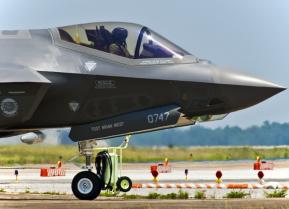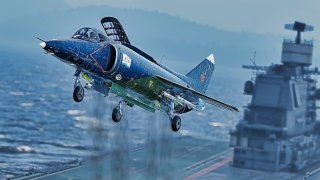Russia's Yak-38 Fighter was 'Totally Unreliable in Combat'
Not only were the Yak-38s subpar when compared with the Harriers, but they were totally unreliable in combat, either in an offensive or defensive capacity.
The Soviet Union’s Yak-38 fighter was the Soviet Union’s attempt to keep up with advances in Vertical Short/Takeoff and Landing (VSTOL) capabilities in Western fighters. The Yak-38 was intended to be an aircraft carrier fighter jet, which is where so much of the Soviet mind was fixated on: challenging the Americans on the High Seas with a carrier force of their own. Hence, the Soviet Navy throwing considerable resources that the USSR did not really have on a carrier force that would ultimately never see the light of day.
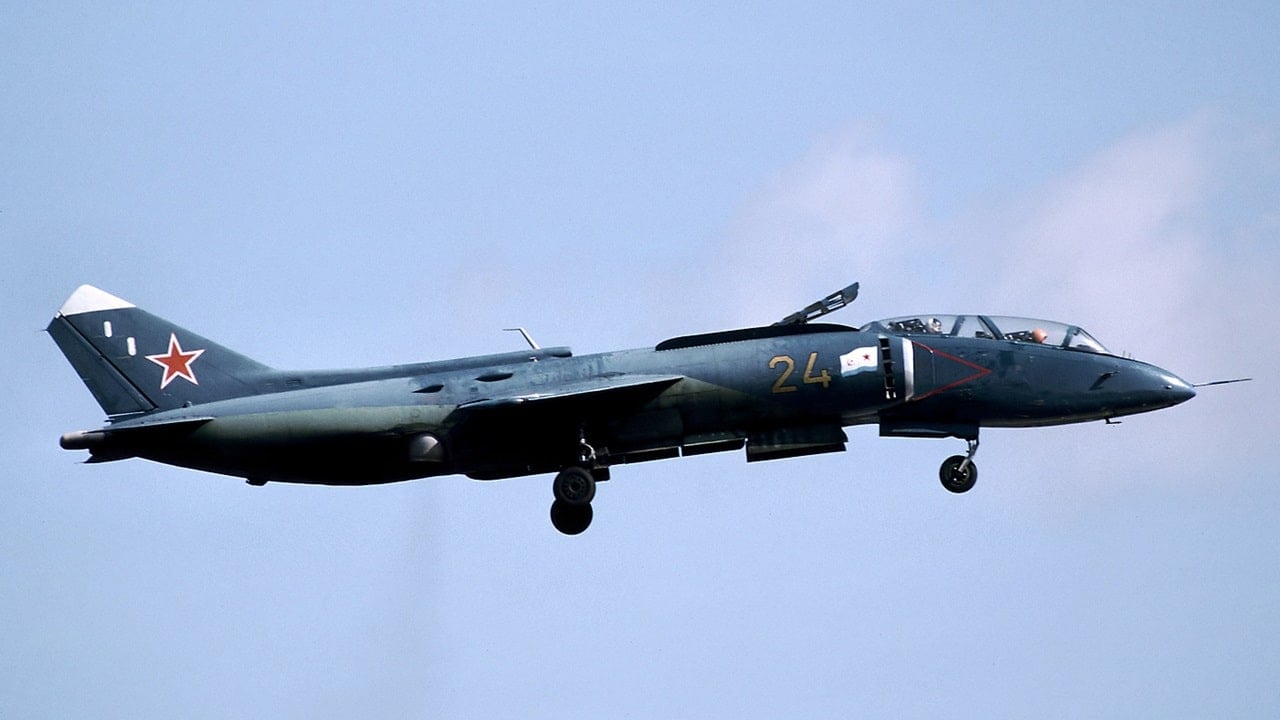
The Yak-38 was a small but essential part of those plans. Ultimately, the Yak-38 was deemed a failure by its pilots. This bird never quite lived up to the hype surrounding it. The Yak-38 certainly did not become the world sensation, James Bond.
The biggest issue facing the Yak-38 is the fact that it took years to just ensure that the Yak-38 was in top flying form. Various tests needed to be done. The VSTOL system was especially troubling for most Soviet pilots of the Yak-38. According to Peter Suciu, the VSTOL never worked.
When the Yak-38 was sent to fight in the Soviet-Afghan War, its engines kicked up so much dirt and muck from the ground below that the engines could get clogged, crashing the bird. What’s more, the Yak-38 had limited range and it did not fare well in the extreme heat of Afghanistan.
The Yak-38 was a Poor Weapons Carrier
The Yak-38 also had a pathetic weapons package. It could carry little more than 4,000 pounds of armaments. And it had only four external hardpoints to carry ordnance.
Even though the Yak-38 was designed to be used aboard Soviet helicopter carriers, Yakolev did not install a radar system on the plane. This meant that the Yak-38 could not be used very effectively in fleet defense.
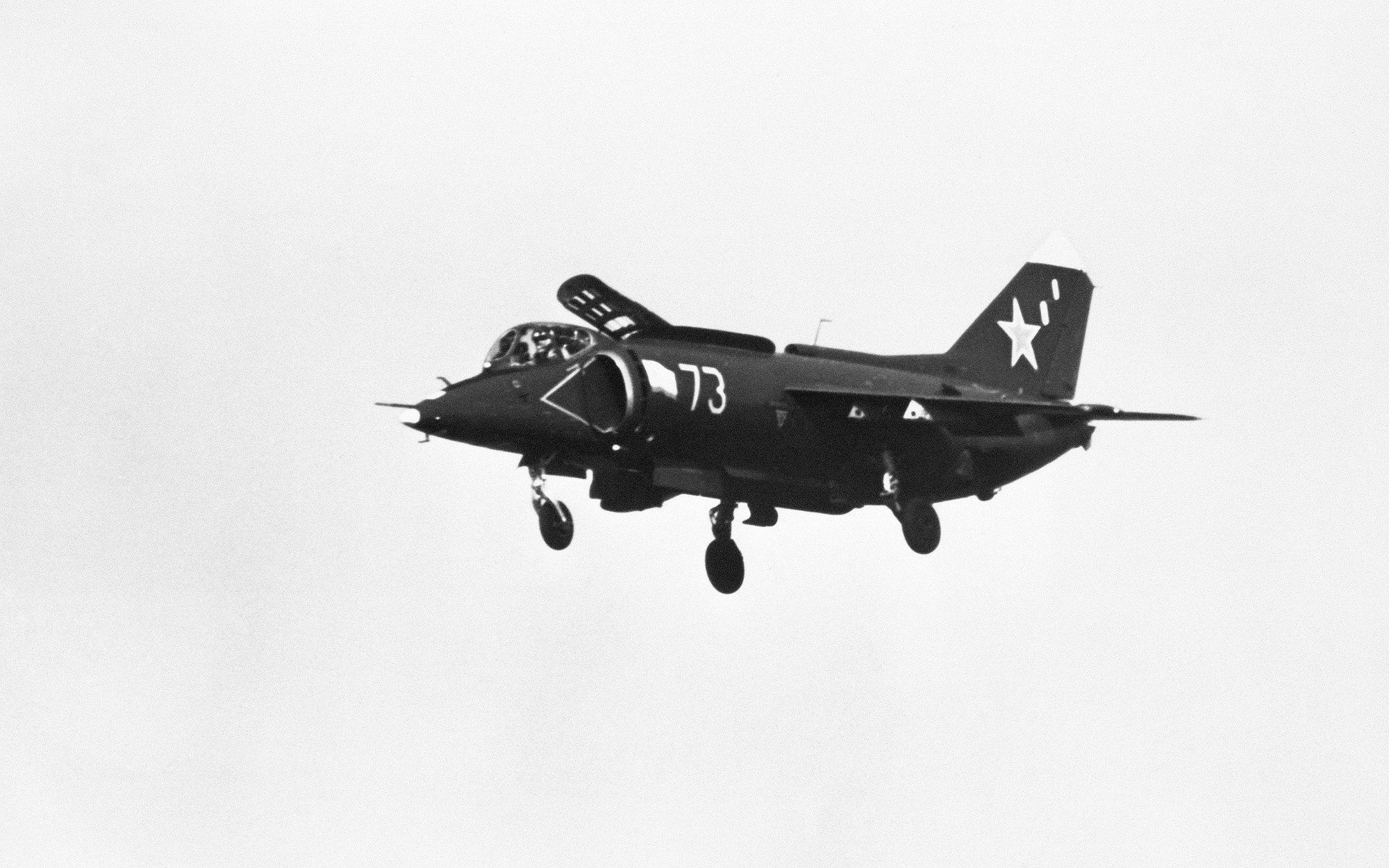
For those unaware, while carrier-based warplanes are used for offensive missions, such as bombing distant targets, another key element of carrier-based warplanes is that they are to be used to protect the fleet they’re operating from. So, if a helicopter carrier that the Yak-38 was operating from suddenly fell under attack, its fighter screen would have been very limited because of the lack of radar onboard the Yak-38.
Some Other Yak-38 Facts
As for the engine, it had a single RD-27 engine and two lift jets that, as the name suggests, allowed for vertical takeoff and landing. The only issue was that there were numerous instances where at least one of the lift jets malfunctioned, leading the other one to overcompensate, sending the bird into a tailspin, resulting in it crashing.
Evoking Peter Suciu once more, the Soviet engineers who knew about the lift jet issues installed an automatic ejection system to better protect Soviet pilots. If that system detected sudden changes in pitch, the pilot would be ejected.
It was a significant change in Soviet military policy, which often did not value the lives of its troops and created the cheapest equipment possible rather than spend the money on safety systems. The only problem for the Soviet pilots was that the auto ejection system was very sensitive. It was triggered by accident more often than it was triggered to actually save the life of the Red pilot. Rather than saving the life of the pilot, then, it likely ruined his career for having lost an expensive platform when there was nothing wrong.
Yakolev chose the RD-27 engines to power the Yak-38 to help get the bird to near supersonic flight speeds. But this had the unfortunate effect of diminishing the range of the warbird, which is why it did not perform well in combat over Afghanistan in the 1980s. A later variant of this bird, the Yak-38M, had more powerful RD-28 engines and tougher landing gear than the original had.
Yak-38 Displays Late-Stage Soviet Problems
The Soviet Yak-38 was a disaster.
It was an example of inefficiency and waste that had become the hallmark of the old Soviet system (which is one primary reason behind the collapse of the USSR). Rather than ask what they really needed to make their forces competent and competitive with Western militaries, the Soviet government simply copied (badly) the Harrier jumpjets that the British and Americans were embracing.
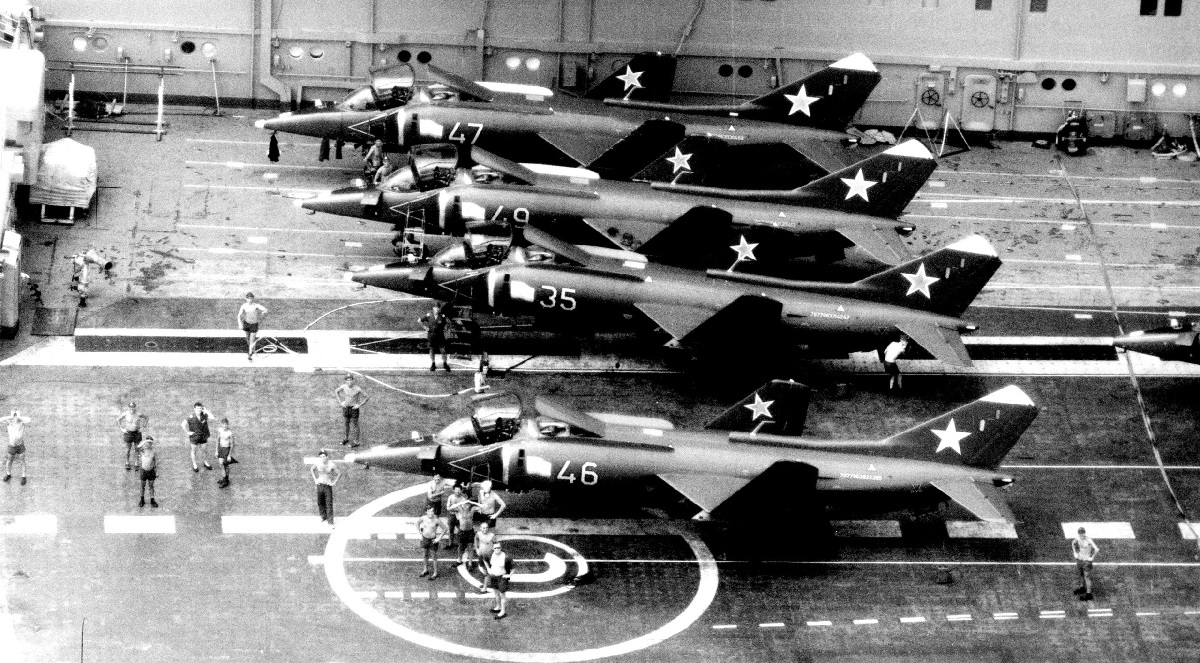
Not only were the Yak-38s subpar when compared with the Harriers, but they were totally unreliable in combat, either in an offensive or defensive capacity.
More gallingly, Soviet planners knew this about the Yak-38. Yet, they went on to build 241 of these units—as well as an additional 38 units of the Yak-38M (which wasn’t much better than the original Yak-38).
About the Author
Brandon J. Weichert, a National Interest national security analyst, is a former Congressional staffer and geopolitical analyst who is a contributor at The Washington Times, the Asia Times, and The-Pipeline. He is the author of Winning Space: How America Remains a Superpower, Biohacked: China’s Race to Control Life, and The Shadow War: Iran’s Quest for Supremacy. His next book, A Disaster of Our Own Making: How the West Lost Ukraine, is due October 22 from Encounter Books. Weichert can be followed via Twitter @WeTheBrandon.
Image Credit: Creative Commons and/or Shutterstock.
